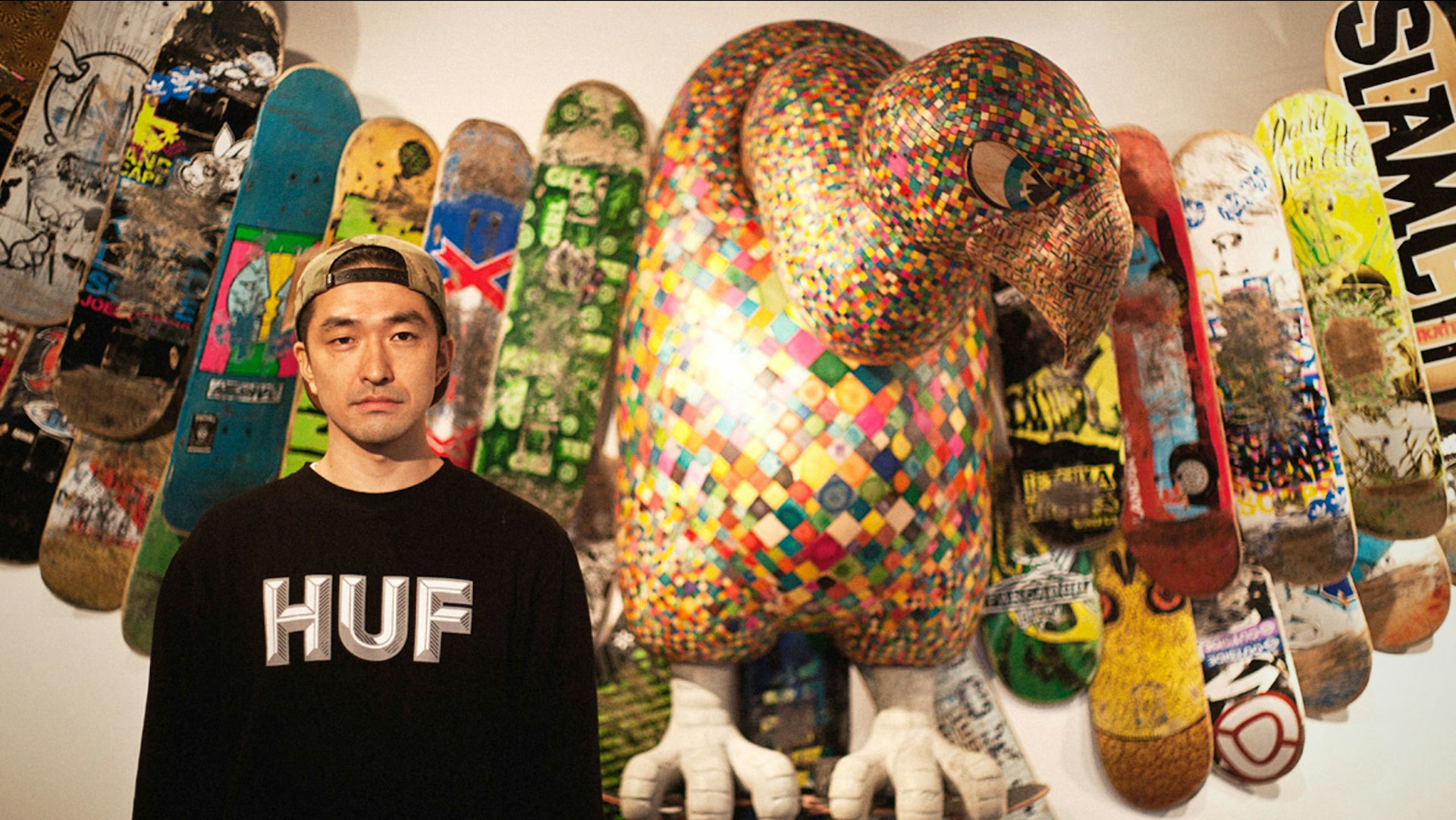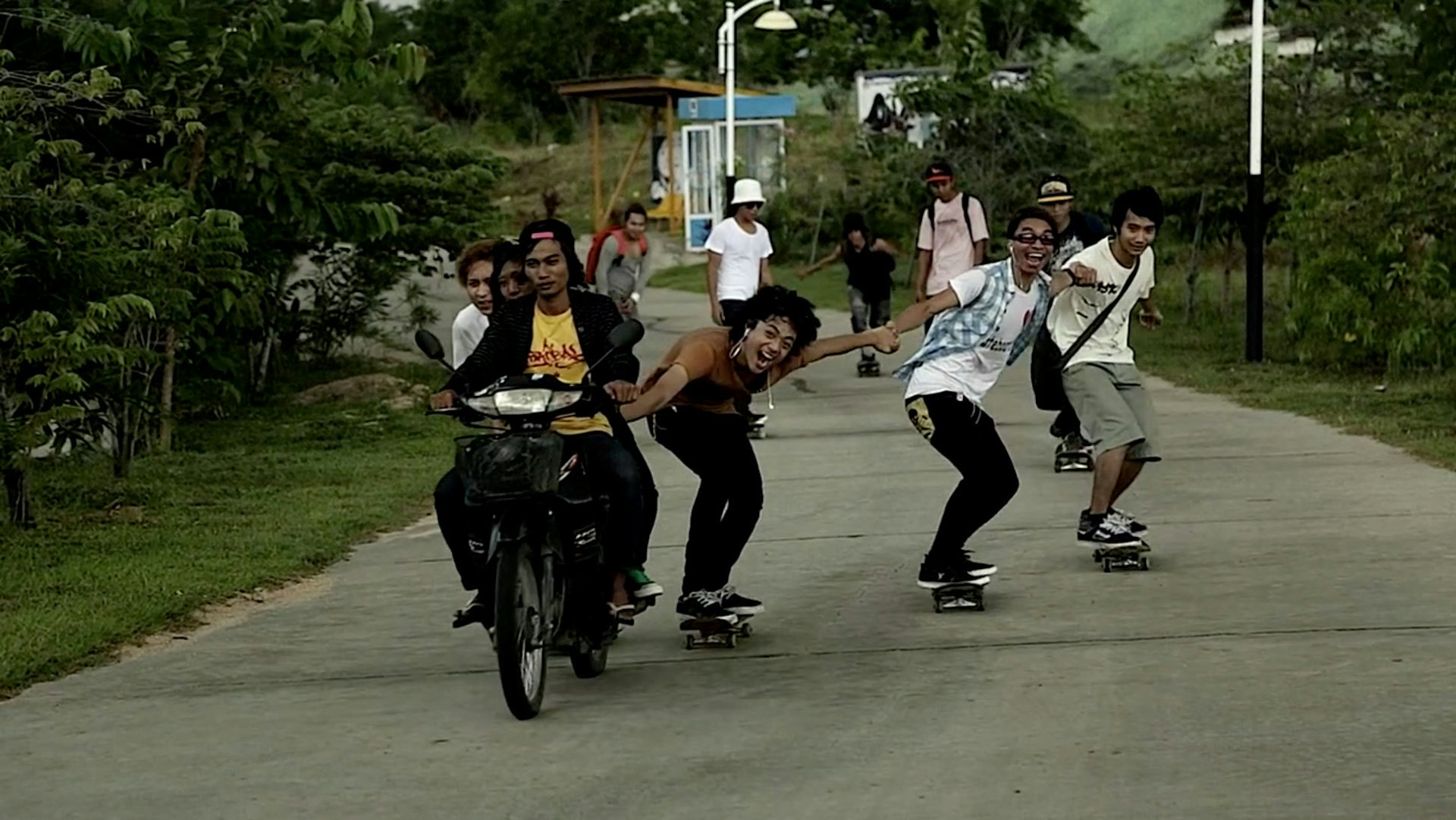
Haroshi
- Text by Alex King
- Photography by Adrian Morris
Haroshi constructs intricate, multicoloured sculptures from pieces of abandoned skateboards. The Japanese artist compresses old decks together then cuts this composite into shapes which he painstakingly glues together to form incredible wooden mosaic structures. No unloved piece of skate paraphernalia is left untouched as wheels, spacers, trucks and bearings also find their way into his pieces. His latest show, ‘Pain’, which just closed at StolenSpace, draws on his own personal struggles and comments on the overlap between pain, skateboarding and art. Huck sat down with Haroshi to talk art and suffering.
What first inspired you to turn old skateboards into art?
I used to work in the jewellery industry but I got bored making mass-produced pieces. In truth, it was my partner, Haru, who looked at my old boards piled up in a corner of the room and wondered if something interesting could done with them. I didn’t think I would find any interest from working with the old boards, but when I started, I realised it was a lot of fun.
Why do you feel that conserving and re-using this material is important?
In the early days of my career I didn’t feel it was important at all. I just didn’t have enough money to buy materials and people were throwing decks away, so I just collected them. Eventually, I was drawn in by the lure of used decks. I realised that decks which someone had skated hard had lots of scratches and broken parts, which are just beautiful to me. People asked me ‘Isn’t it easier to use new decks?’, but it’s more fun to use old decks in my art.
You’re self taught. Can you tell me about the learning process you went through to acquire the skills and techniques you use?
When I started, I could only make awful stuff. Now, I’m embarrassed when I see all those old pieces. But all those experiences along the way have helped me develop my thinking and my skills. That learning process made my art unique. So now I just keep going: learning and doing, along the way.
What is the relationship between pain and skateboarding?
I think skateboarding is similar to tattooing: it looks good from the outside, but is associated with pain. The result will be worth the effort because it will go beyond the pain it cost. If you’ve really put a part of yourself into something, you will understand the pain I’m taking about.
How have your own experiences of pain informed this body of work?
There is a hidden theme in each piece of art. Pain is not only from skateboarding. The art piece ‘Agony into Beauty’ expresses my own pain. I got lower back pain from skateboarding and hard work made it worse. I couldn’t do anything for a month at the beginning of this year. But I had to keep working on art pieces and I couldn’t go skateboarding. I have to make something from the pain and struggle.
Is pain a necessary ingredient in art?
I think pain is a necessary ingredient in art. Physical pain, complex and bad environments make art pieces shine. Art pieces get stronger and more beautiful the greater your will to express something.
What inspired you about Unkei’s use of Shin-gachi-rin, and how have you adapted the concept to use in your own work?
When I discovered Unkei’s technique, I fully understood how much it meant. I thought I should put a physical object into my art pieces to give them the presence of a soul. My art pieces need something invisible or understandable. There can be no meaning in life if we acknowledge only the visible. I think we all know that the most important things are invisible.
If you could only have one thing in your life, which would it be: art or skateboarding?
Good question! I have never been asked that. I think no one would call me an ‘artist’ if I didn’t make art with skateboards. I mean, everything is linked. I would disappear if I had to choose only one. Sorry, I really can’t answer that question.
To learn more about Haroshi’s artwork, check out haroshi.com.
